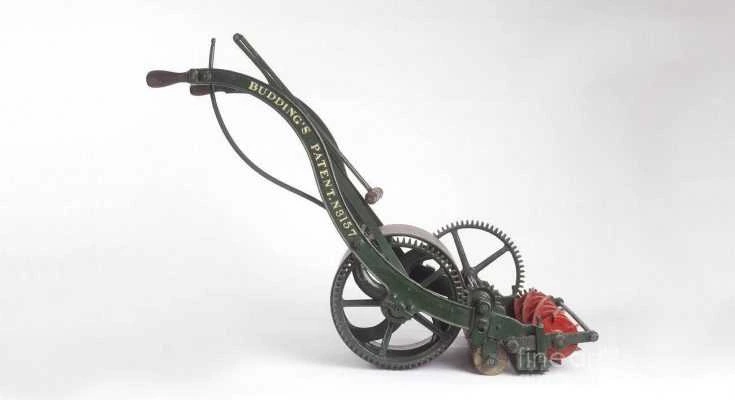Georgian and Regency era
In our History of British Gardening Series – The Georgian and Regency era.
Gardening was coming into its own. With it came the birth of the English Landscape movement and the lawnmower. This period also produced the inspiring Capability Brown who came to prominence in the second half of the 18th century.
| History of British Gardening Series |
|---|
| Roman |
| Medieval |
| Tudor and Stewart |
| Restoration |
| Georgian and Regency |
| Victorian |
| Edwardian |
| Modern |
Timeline
1730 William Kent works on the original garden plans for Kew Gardens.
1735 Systema Naturae is published by Swedish botanist Carl Linnaeus. Carl Linnaeus (1707 to 1778) developed a sexual system of classifying plants based on the number of stamens and stigma on a flower. It’s still used today.
1751 Capability Brown sets up a landscape business in Hammersmith, London.
1768 Joseph Banks sails with James Cook across the Pacific to bring back horticultural specimens.
1772 George III employs Capability Brown to remodel parts of Kew Gardens.
1788 Humphrey Repton gets his first commission as a landscape gardener from Jeremiah Ives in Norfolk.
1795 Plant hunter Archibald Menzies brings back monkey puzzle seeds from South America.
1804 The Horticultural Society was formed, later to become the Royal Horticultural Society.
1822 John Loudon publishes the Encyclopaedia of Gardening, including soil improvements with fish.
1826 The Gardener’s Magazine is founded by John Loudon, one of the most influential garden writers of his time
1829 Nathaniel Ward invents the Wardian case helping plant hunters transport plants.
1830s Edwin Budding invents the lawnmower. Before 1830 lawns were cut with scythes, which was extremely labour intensive and left an extremely rough finish. By 1858, more than 7,000 machines had been sold.
1834 David Douglas dies on a plant-hunting expedition in North America.
Georgian and Regency style of gardening
The English Landscape movement – 1750s to 1780s
This era saw the birth of the English Landscape movement. From about 1700 onwards, visiting gardens had become a national pastime, and the grand tour of Europe became a part of every gentleman’s education. Formal gardens were on the way out and writers and landscapers advocated a return to nature. After seeing the ruins of ancient Rome and Greece, landowners came home to England hoping to create a classic wilderness in their country estates.
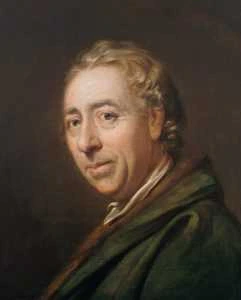
Capability Brown came to prominence in the second half of the century. His design philosophy was that the landscape should run right up to the walls of the house, which would usually be set on high ground to enjoy the best view. A belt of trees, with views of the countryside beyond, surrounded the landscape and further clumps were planted at strategic points to create vistas and soften or emphasise the vast open spaces. Man-made lakes were linked by ornamental bridges or cascades, and temples backed by trees made focal points on lakeside banks or islands. He used beech, oak, Scots pine, and sweet chestnut to create scenes that took in the changing seasons and the light.
The Picturesque movement – 1780s to 1830
The Picturesque movement towards the end of the 18th century was a reaction away from Brown’s smooth, rolling, landscapes. People such as Richard Payne Knight and Uvedale Price looked for a wild and more rugged inspiration that would be suitable for dramatic, natural landscape painting. The word ‘picturesque’ was taken from pittoresco, the Italian for ‘in the manner of a painting’. The picturesque taste declined in the 1830s.
Georgian and Regency characters
Charles Bridgeman (1690 to 1738)
Royal gardener Charles Bridgeman worked under London and Wise in his formative years. He started the century laying out formal gardens, but began to introduce the odd curved path to wooded and less formal areas of gardens.
He created lakes and was the first to use the ha-ha, a hidden ditch that created a subtle divide between the landscape where animals roamed freely and the cultivated landscape (source). He’s regarded as the key link between the geometric formality of London and Wise and the informal landscaping of Kent and Brown. Gardens that he worked on included Stowe, Claremont, Kensington, and Chiswick (source).
William Kent (1685 to 1748)
Described by Horace Walpole as “the father of modern gardening”, William Kent was of humble origins, born in Yorkshire to a joiner. He had all-round artistic talent in theatre design, painting, architecture, and interior design. Thanks to a wealthy patron, he spent nine years in Italy. Many of the garden buildings he designed used the style of classical Italian architecture. Kent sowed the seeds of the English Landscape movement and advocated an imitation of the spectacular sweeping landscape.
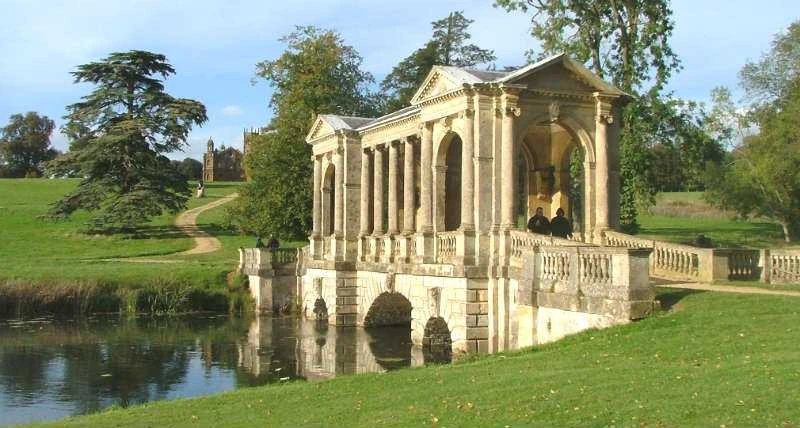
Following on from Bridgeman, Kent worked at Stowe, Claremont, and Chiswick. He also worked on the original plans for the Royal Botanic Gardens, Kew. Rousham House is considered to be the greatest example of his work (source).
Lancelot ‘Capability’ Brown (1715 to 1783)
Brown is the key character of the English Landscape movement. His gardens dominated the gardening style from the 1750s to the 1780s. Originally employed as head kitchen gardener at Stowe, Brown learned a lot from William Kent.
Brown was an experienced gardener who knew the habits of trees and shrubs but had no architectural skills. In 1751 he set himself up as a landscape gardener and became known as ‘Capability’ Brown because of his habit of extolling the capabilities or potential of landscapes he surveyed. His style involved bringing the sweeping landscape right up to and surrounding the house.
This involved huge, ambitious earth-moving projects, creating lakes and hills, and exaggerating or changing natural contours. He was the first to subcontract workmen and, being an engaging personality, was a popular choice among landowners. On his advice, many of them destroyed their expensively built formal gardens in favour of a landscape they would never see mature.
In 1764 Brown was appointed surveyor of Hampton Court where he lived in Wilderness House. He planted the Black Hamburg grape which still exists, making it the oldest-known vine in Britain. Gardens designed by Brown include Stowe, Stourhead, and Claremont.
Humphrey Repton (1752 to 1818)
Humphrey Repton became a landscape gardener in 1778. His work was a sort of stepping stone between a ‘natural’ landscape and the return to the formal style. He’s associated with the English Landscape movement but there was also a formal emphasis closer to the house by reintroducing flowerbeds with balustraded terraces directly outside the house that could be used to enjoy the flowers.
Repton, who replaced Capability Brown as head gardener at Hampton Court, is considered to be the first person to use the phrase ‘Landscape Gardener’. His famous Red Books contained ‘before’ and ‘after’ artist impressions of the garden, and detailed notes made when walking with his client on the grounds. Repton’s best work can be seen at Attingham Park and Sherringham Hall, but he also worked at Sheffield Park, Tatton Park, Hatchlands, Woburn Abbey, and Holkham Hall.
Sir Joseph Banks (1743 to 1820)
Joseph Banks is one of the key figures of Britain’s horticultural past. He went on three major plant hunting expeditions, the most important one being his trip with Cook on The Endeavour to Australia.
He paid £10,000 for himself and nine members of staff, including botanical artists and natural scientists to attend, and took with him 150 books. He discovered more than 1,300 plants and was so impressed with the amount of flora in one area of Australia that he named it Botany Bay.
Banks became the first director of Royal Botanic Gardens, Kew, and was one of the seven original founders of the Horticultural Society in 1804. He funded many plant hunting and exploration trips, including the first voyage to circumnavigate Australia by Matthew Flinders. Banks died at the age of 77, having been responsible for collecting more than 7,000 species of plants.
Francis Masson (1714 to 1805)
Francis Masson was born in Aberdeen in 1741. He became an apprentice at the Royal Botanic Gardens, Kew before accompanying Captain Cook at the age of 31 on his voyage to discover Australia. He traveled extensively all around the world, including collecting many flowering plant species from the Cape of Good Hope.
He was so dedicated to planting collecting that he risked life and limb when he crept into Cape Town to collect the seed of the arum lily, after being repeatedly told to avoid the town as the Dutch were at war with the British.
His main area of interest was discovering colorful herbaceous perennials, many of which can still be found in our gardens today, including the common garden geranium. After dedicating 33 years to collecting plants for Royal Botanical Gardens, Kew froze to death in North America. Plants he discovered include African blue lily, Agapanthus inapertus, Arum lily, Zantedeschia aethiopica__Kniphofia rooperi, and Watsonia x longifolia.
David Douglas (1799 to 1834)
David Douglas was not just a plant hunter. He was also an intrepid explorer and adventurer and there are many stories about him wrestling grizzly bears and living like a native North American Indian. His travels took him mainly to North America in the 1820s and 1830s, where he travelled by foot and canoe collecting seeds and plants to bring back to Britain.
Sadly his adventuring was to be the death of him. While travelling through Hawaii he fell into a pit, dug by the locals to catch wild bulls. Unfortunately, there was already a captured bull in the pit and he was gored to death. He introduced about 240 species of trees and plants to Britain, including Douglas fir, Pseudotsuga menziesii, Flowering currant, Ribes sanguineum, and Mahonia aquifolium.
Georgian and Regency themes
Pineapples
Henry Telende in 1720 created a hotbed that enabled pineapples to be grown in Britain. By the 1750s pineapple pits were all the rage among the well-heeled gentry of English society.
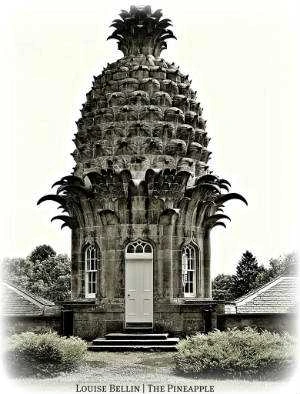
Apples
William Forsyth published the Treatise on the Culture and Management of Fruit in 1802. Fruit growing was becoming increasingly popular and books on practical fruit growing were selling fast. William Forsyth’s Treatise on the Culture and Management of Fruit went through seven new editions between 1802 and 1824.
The book lists 300 different apples and 100 pears that could be grown and – because of the development of greenhouses – exotic fruits, such as apricots and nectarines.
Auricula theatre
Small wooden theatres or staging were created throughout the Regency period to show off these delicate primula flowers.
Soil improvements
One of the sections of John Loudon’s book the Encyclopaedia of Gardening deals with improving soil conditions. It recommends burying the carcasses of dogs, deer, and even horses in the soil.
Partially rotted fish was another method used to increase the fertility and consistency of the soil. Nowadays, animal by-products such as blood, fish, and bone are still used as garden fertilisers.
Lawnmowers
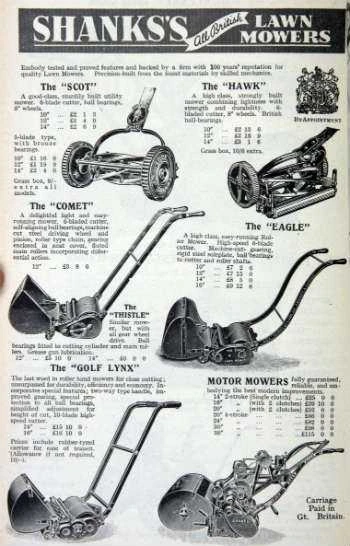
Before 1830 lawns were cut with scythes, which was extremely labour intensive and left an extremely rough finish.
Edwin Beard Budding had the idea for a lawnmower after seeing a machine in a local cloth mill that used a cutting cylinder (or bladed reel mounted on a bench to trim the irregular nap from the surface of woolen cloth and give a smooth finish. By 1858, more than 7,000 machines had been sold.
It took ten more years and further innovations to create a machine that could be drawn by animals, and sixty years before a steam-powered lawn mower was built.
Alexander Shanks of Arbroath registered a pony-pulled mower that cleared the clippings. To avoid the hooves leaving indentations in the lawn, soft brown leather shoes were wrapped around the horse’s feet.
Eventually, James Sumner of Lancashire patented the first steam-powered lawn mower in 1893 (source).
Fruit growing
Fruit growing was becoming increasingly popular. And books on practical fruit growing were selling fast, with William Forsyth’s Treatise on the Culture and Management of Fruit going through seven new editions between 1802 and 1824. The books lists 300 different apples and 100 pears that could be grown and – because of the development of greenhouses – exotic fruits, such as apricots and nectarines.
The original content was published on the BBC Gardening website, however, the Design section with all of its content has been removed. We try to keep this great content alive here on the Gardenlife Pro site.
